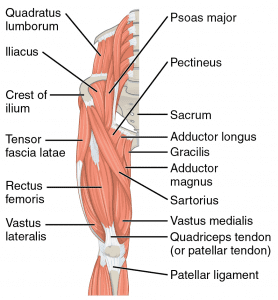Wondering how to prevent running injuries is common amongst your running beginners, as well as the most seasoned marathon runner. Preventing injuries isn’t as complicated or as impossible as it may seem. Injuries, to most runners, seem like an inevitability and something that “comes with the territory”.
It doesn’t have to be that way though. There are any number of things you can do to proactively avoid running injuries ranging from strength training, to stretching to changing your gait.
The phrase “impact sport” is commonly associated with sports like football or rugby, but running has it’s place in this category too. A typical mile jog contains roughly 1,600 steps, whereby each step absorbs the impact of up to 2.5 times your body weight. That’s a lot of stress to put on your leg muscles & joints, especially if they’re not able to maintain an ergonomic position designed to help the body avoid injury.
The 3 main areas of focus for mobility and flexibility should be the hips, knees and the lower leg (consisting of the calf, ankle and foot).

The hips and lower leg are arguably the most important joints to focus on when trying to prevent running injuries, because any imbalance or weakness here, can put the knee into a poor position. In fact, most knee injuries, are actually caused by a weakness in hip muscles such as the:
Weakness in these muscles causes the hip to drop on each step. The bodies reaction to this, is to counter balance by sending the knee inward and rolling the foot inside, flattening out the arch. Not only does this put the knee in a poor position, it also greatly reduces your ability to ‘spring’ off your feet, thus reducing your speed and distance-per-stride.
Stretching and mobility work will help your bodies ability to get into proper running position. Strength training is what will help your body stay there as you increase mileage and fatigue on your muscle groups.
Some of the most effective running injury prevention exercises are:
Many runners consider the first few miles of their run to be their warm-up. While this may work for some time, it lends itself to injury, as the body’s joints may not be ready to handle the impact of running without a proper warm-up.
A warm-up and cool-down don’t have to be overly complicated, or take a long time.
A proper warm-up including stretching, muscle activation and some strength training can take as little as 8 minutes, and a cool-down with an appropriate amount of stretching can take 7.
This means you can help your body prevent running injuries in 15 minutes of added time, a step often overlooked, but easily the most critical of this list.
Running can become addictive, and when trying to reach a particular distance, or milestone (pun intended), it can be easy to increase mileage too quickly, putting you at risk for injury.
A good template to follow, is a 3 week increase, followed by a 1 week taper, and repeat.
For example, let’s look at a 9 week example half marathon training plan.
Notice how week 4 and week 8 are lower mileage than the surrounding/previous weeks. Weeks like this are called “taper” weeks, and they allow your body to stay active, but also to recover from the increase in distance.
This will still allow your body to adjust to an increase in mileage, but coupled with an injury prevention strength and stretching program, will keep you safe from injury.
All athletes, new and veterans alike, can sometimes have trouble taking time off.
What’s important to remember, is that rest and sleep are equally (if not more) important compared to exercise.
With each run, the muscles in the body break down thanks to the physical exertion caused by such an activity. Muscles only grow stronger, when they’re given an opportunity to rebuild themselves to adjust to an increase in training volume.
This rebuilding process happens during sleep, and rest, never during exercise.
In short, in order for your body to recover and build itself up to handle more mileage, or faster speeds, you need to rest, hydrate, and get plenty of sleep. You may still make strides without doing these things, but progress will be slower, and you’ll be more susceptible to injury.
Particularly important if you’re new to the sport of running, or really trying to increase distance for the first time, talk to someone who’s done it before.
This could be a coach, a friend, or someone you meet at your local 5k, but get some added perspective on what’s worked for others so you can adapt their success to your training.
Coaches can be found all over, and your local running store is a great place to start looking. Find someone whom you trust and feel comfortable with as the coach/athlete relationship is equally as important as the knowledge a coach may possess.
While the specific running injury prevention exercises and other bits of advice discussed here aren’t groundbreaking, they are important. The fact of the matter is that most runners simply don’t do anything proactively to avoid injury, and the result is that 2 out of 3 runners get hurt every year.
You have the opportunity to take charge of your own physical wellbeing and avoid running injuries with as little as 15 minutes per day. What are you waiting for?
Get exclusive training secrets and productivity tips in your inbox to level up your life.